by Ian Skellern
The latest generation of optical atomic clocks are accurate to less than one-tenth of a second over the age of the universe (13.8 billion years). So why are they still measuring the length of a second as though it’s 1957? It’s because of the moon.
Until relatively recently in the history of our species, we have divined and calculated the time from astronomy. The seasons repeated yearly as our planet rotated around the sun; the moon gave us monthly intervals as it rotated around the earth; and our days passed regularly with the earth’s rotation on its own axis.
Obelisks and sundials then enabled us to break down the day further into hours and even minutes. Then the invention of telescopes allowed us to get even more precise time from the stars, and ever more precise atomic clocks allowed us to create our own time on earth, independent of the heavens.
One year = 365.25 days
One hour = 0.00069444 or 1/1,440th of an average solar day
One second = 0.00001157 or 1/86,400th of an average solar day.
George Darwin (1845-1912), son of the famous naturalist Charles Darwin, was a lawyer, physicist, and astronomer. He became interested in determining the age of the earth and the formation of the moon. And to that end he studied tides and the impact of tidal friction on the earth and the moon.

The tidal bulge combined with the rotation of the earth and obit of the moon causes the former to slow down and the latter to speed up (image courtesy www.scienceabc.com)
And he learned that the moon wasn’t just moving water, but was responsible for our planet being around four meters greater in diameter at the equator.
In a book he published in 1899, Darwin explained his “fission theory,” which postulated that the moon had broken away from our still largely molten, forming earth over 50 million years ago (it was actually around 4.5 billion years ago) and is still moving away from earth.
While Darwin’s fission theory of the moon moving away from the earth was widely derided, his calculations were confirmed 70 years later when in 1969 the Apollo 11 astronauts placed mirrors on the moon so that laser beams from earth could be reflected back and timed. These proved that the moon is moving away from the earth by 3.8 centimeters per year (about as fast as our fingernails grow).
The pull of the moon on the earth and resulting friction caused by tides causes the earth’s rotation (and the length of our day) to slow down by around two milliseconds every 100 years. That also means that the length of an astronomical day today is longer now than in the past and will be even longer in the future.
We define a day as 24 hours, comprising 1,440 minutes (60 x 24) and 86,400 seconds (60 x 1,440), so if the astronomical days are getting longer, all those increments (hours, minutes, and seconds) are also slowly but surely getting longer as well. While our moon-induced tides cause the earth to slow down and our days to get longer, the moon is moving away from earth because those same tides are causing it to speed up.
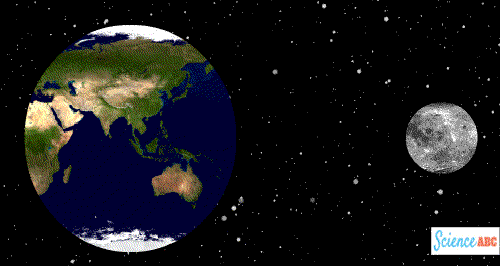
Relative rotation velocities of the earth and the moon, not to scale (image courtesy Science ABC)
Here’s why. The moon’s gravity pulls a large body of water toward it, causing a huge bulge in the ocean on the side facing the moon (and on the other side as well but we can discount that here). As the earth is rotating relatively fast – in 24 hours compared with the moon’s rotation of 27.3 days – that fast-rotating bulge of water continually moves slightly ahead of the moon’s orbit, pulling the moon to move slightly faster. The inverse is that the same effect slows the earth down.
That means that billions of years in the future, the length of a day on earth and the length of a month will be the same: around 47 of our present days. In the last few hundred years, the exact time on earth and the length of our days were determined by the positions of stars using telescopes.
And as telescopes became more powerful, we could measure the positions of the stars to ever greater precision, which enabled us to measure the time with ever greater precision. And then came the atomic clock. And everything changed.
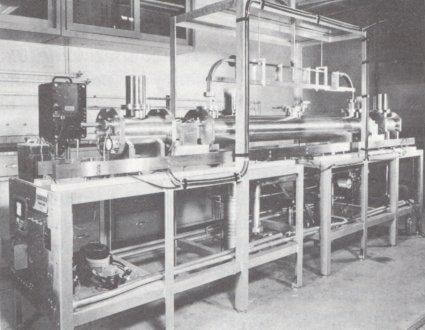
The world’s first atomic clock using the ammonia molecule as the source of vibrations (image courtesy National Bureau of Standards)
All change, don’t look up.
When measuring time, greater precision comes with more oscillations per second (Hertz). The pendulum of a long clock might swing once per second (1 Hz), while the balance wheel of a modern mechanical wristwatch usually oscillates at around four times per second (4 Hz). In comparison, the crystal in a quartz watch oscillates at over 30,000 times per second (usually 32,768 Hz).
But what turned time on its head was the invention of the atomic clock, which was regulated by the frequency of cesium atoms transitioning between two states. These provided an oscillation of more than nine trillion times per second, an incredible 9,192,631,770 Hz.
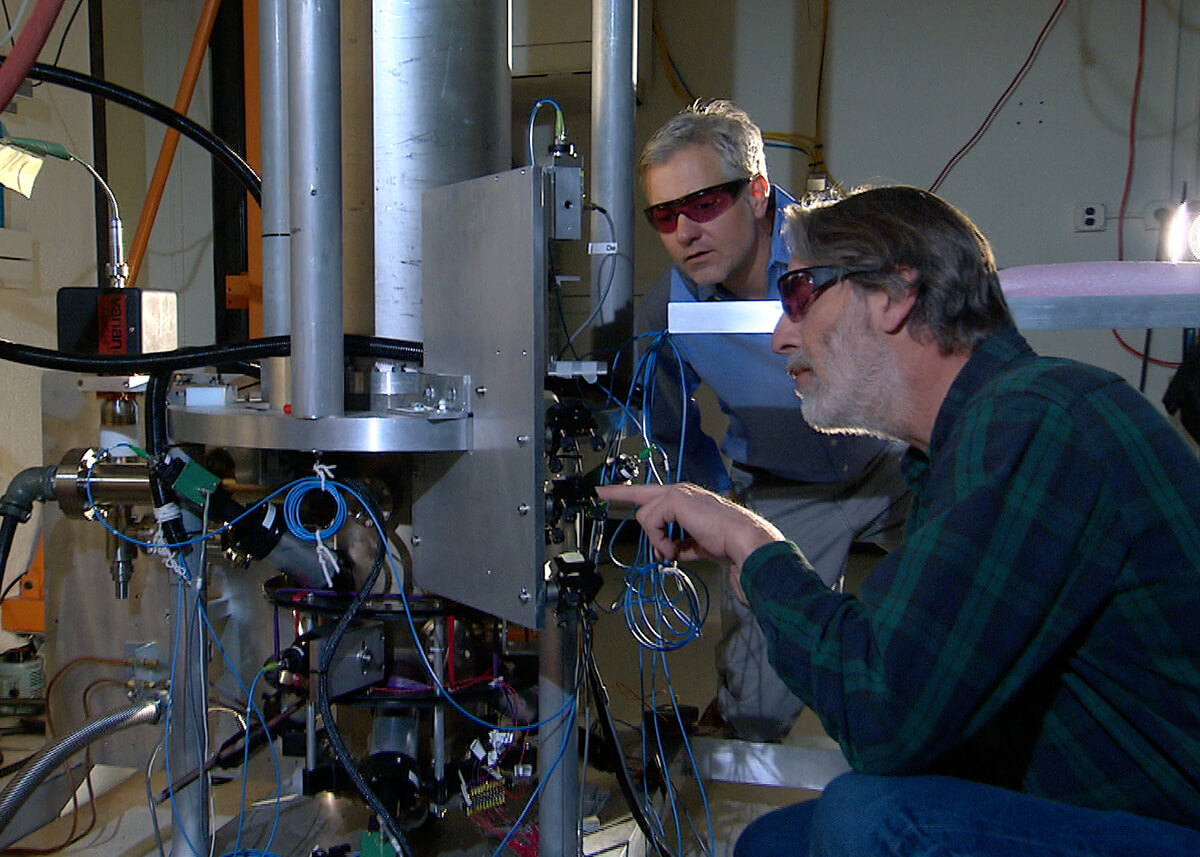
National Institute of Standards and Technology physicists Steve Jefferts (foreground) and Tom Heavner with the NIST-F2 cesium fountain atomic clock, which in 2014 set the civilian time standard for the United States (image courtesy NIST)
To make an atomic clock, scientists excited cesium atoms with microwaves in a vacuum. They then experimented with the wavelength (frequency) of the microwaves to discover which got them most excited and that determined the natural resonance frequency of the atom. In the case of cesium 133, the frequency is nearly 9,192,631,770 times per second (nearly 9.2 billion Hz).
The length of the second measured in the experiments was based on the average length of the day (determined by observing the stars) when the experiments were taking place.
That was in 1957.
Atomic clocks turned observatories on their heads: instead of astronomers using the positions of stars to calculate the precise time, the incredibly precise time of atomic clocks enabled observatories to more precisely plot the positions of the stars.
UTC (International Coordinated Time) is calculated from an average of over 400 atomic clocks around the world.
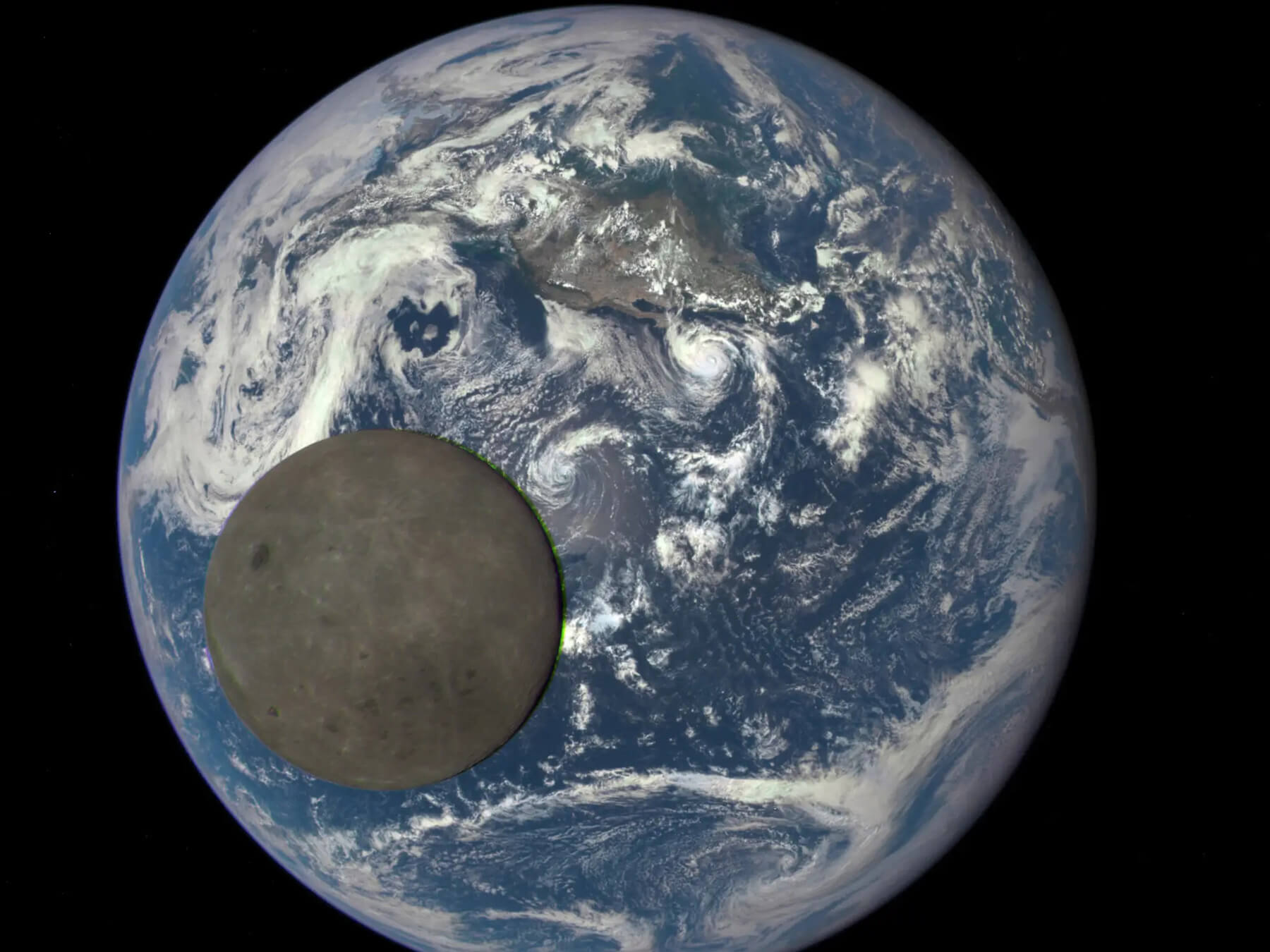
Far side of the moon as it crosses between the DSCOVR spacecraft and the earth 1,600 millions kilometers away (image courtesy NASA)
There are two ways to define a day: astronomically by measuring the time between midday to midday and with a clock. The difference between them is that the length of the former fluctuates while the latter remains fixed. The same is true for seconds.
And then there’s general relativity. And then, as Einstein predicted, there’s gravity and velocity.
The less gravity there is, the faster time flies.
And the faster you go the slower time flies. GPS satellites have their own atomic clocks, which run around 38 microseconds faster per day than if they were on earth. They would run seven seconds per day slower (relative to a stationary clock on earth) due to their high velocity but are slowed down by 45 microseconds per day due to their lower gravity. Without compensating for general relativity, our satellite navigation systems would be out by up to ten kilometers per day.
International Bureau of Weights and Measures: it’s (nearly) all time!
For nearly 150 years, metrologists around the world have agreed on strict definitions for units of measurement through the International Bureau of Weights and Measures (BIPM) based near Paris. The bureau regulates the seven base units: time, length, mass, electrical current, temperature, light intensity, and amount of a substance.

The old meter reference: when the International System of Units (SI) was first announced in 1960, it included a new definition of the meter defined by an exact number of wavelengths of a particular emission from a krypton-86 lamp, relegating the physical meter reference to history
These standards are being constantly refined. In 2018, for example, new definitions were approved for the kilogram (mass), ampere (current), kelvin (temperature), and mole (amount of substance).
Now we have a new generation of optical atomic clocks that effectively oscillate at 500 trillion times per second (500 trillion Hz) and can measure fractions to 19 decimal places. These clocks lose just one-tenth of a second over the entire lifetime of the universe.
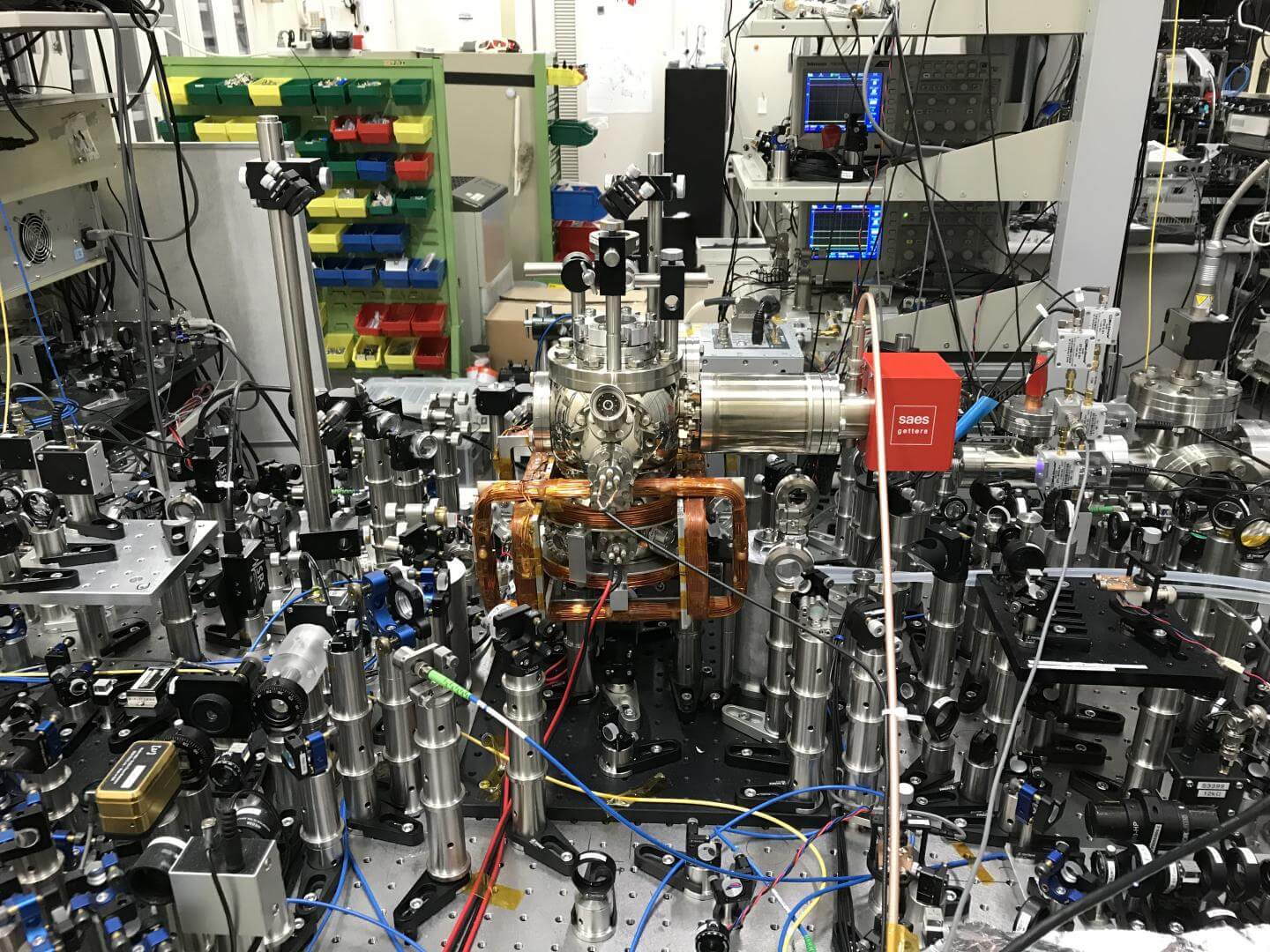
Optical lattice atomic clock at the University of Tokyo (image courtesy Katori et al)
Optical atomic clocks can measure time dilation (time running faster or slower due to gravity and/or velocity) between two clocks placed one on top of the other just 30 centimeters (about a foot) apart!
Thanks to optical atomic clocks, in the next few years, except for the mole, all of the standards will be defined by time, even the kilogram. For example, rather than there being a physical one-meter reference bar, the meter will be defined as the distance light travels in a vacuum during one-299,792,458th of a second.
The definition of the second is changing because a new generation of clocks is capable of measuring time much more precisely.
Back to 1957
Keep the following in mind:
One year = 365.25 days
One hour = 0.00069444 or 1/1,440th of an average solar day
One second = 0.00001157 or 1/86,400th of an average solar day
It seems to me there is a qualifier missing here: 0.0006944 what?
As with everything in nature, things change. Just as the moon is slowly receding from the earth in ever further orbits, the earth is slowly receding from the sun in the same way.
Our days are getting longer by around 1/75,000th of a second per year. Around 1.4 billion years ago, when the only life on earth was primitive algae, a day (midday to midday) was less than 19 hours long.
The moon then would have appeared much larger in the night sky as it was only 341,000 kilometers (212,000 miles) from earth compared with (on average) 385,000 kilometers (240,000 miles) today.
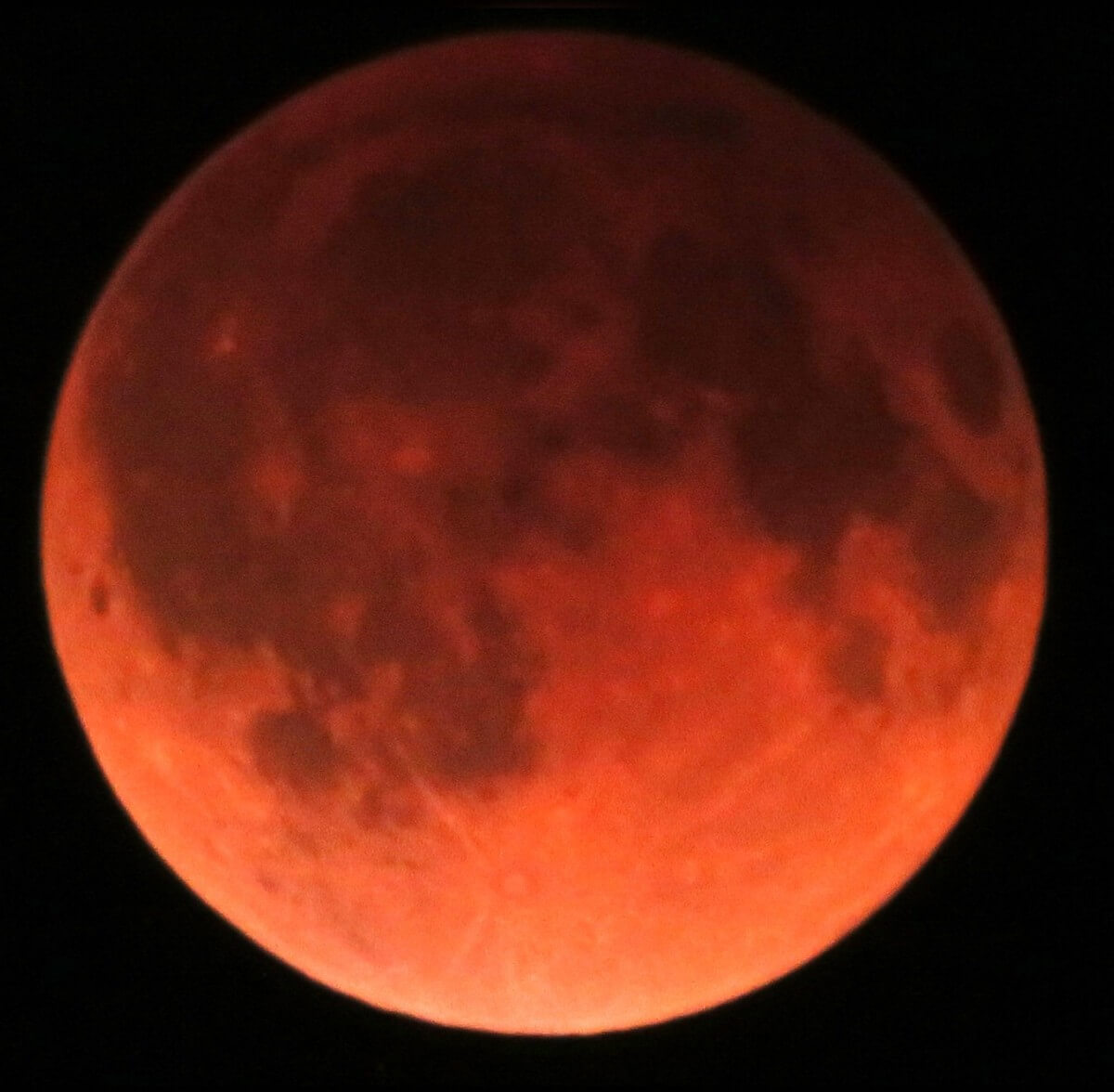
The blood moon during the total eclipse of the moon by the earth on April 15, 2014
It’s worth noting that as with climate change, the earth’s rotation is only slowing over very long time scales; there are years when it speeds up and years when it slows down, but in the long term it’s slowing down.
So hold this thought: if we still divide a day into 24 hours, each hour into 60 minutes, and each minute into 60 seconds, then that means that as the days become longer, with every passing year (on average) the astronomical second becomes longer.
Because this process is so slow, when we started measuring time on earth by reference to mechanical (and even quartz) clocks, the minuscule discrepancies were too imperceptible to worry about or take into consideration.
But once atomic clocks replaced the rotation of the earth in relation to the stars as our standard reference point, the second became a fixed reference rather that calculated by the sun and stars. The official length of a second was fixed at 1/86,400th of an average day.
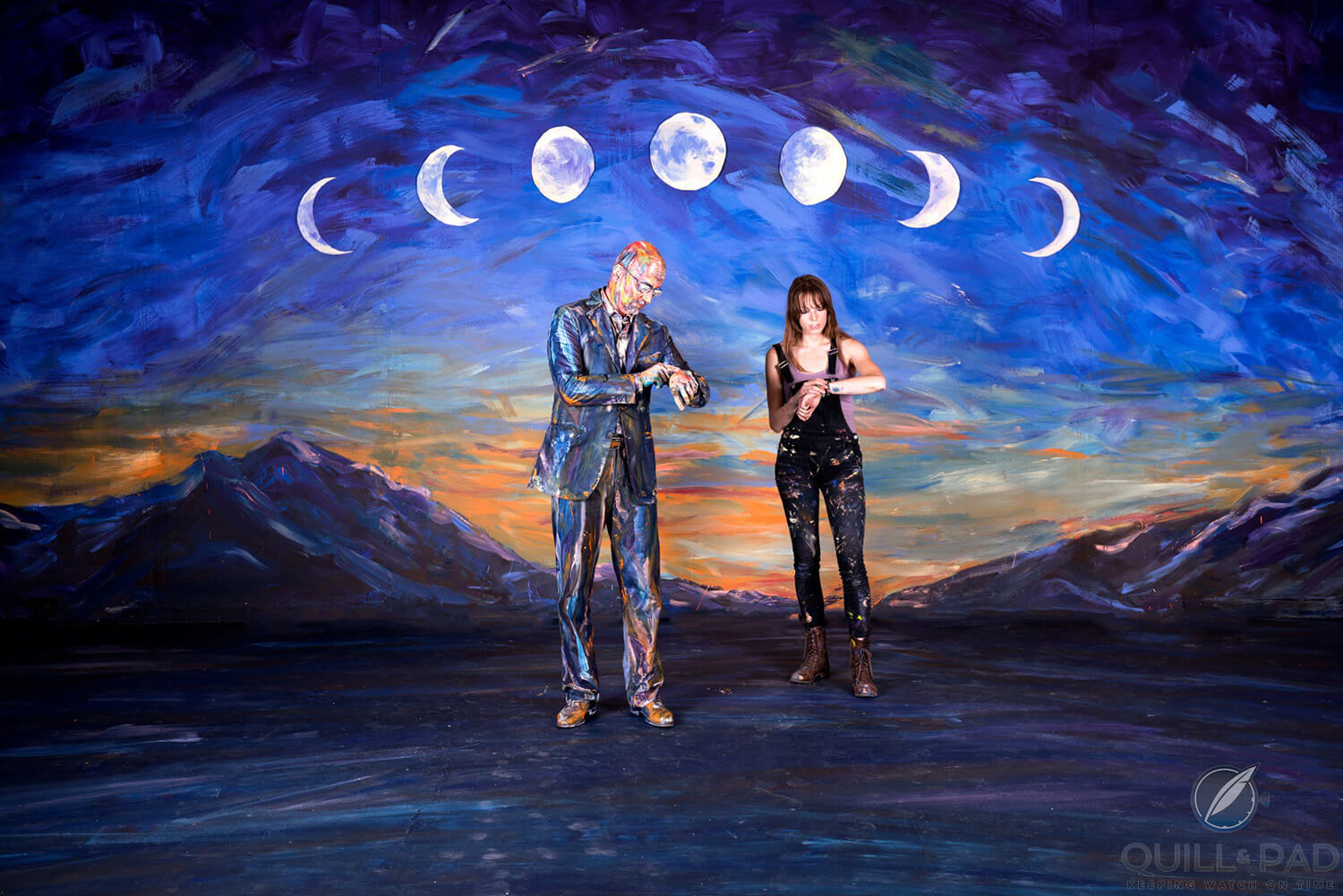
GaryG and Alexa Meade “Watching the Time with Alexa” (image courtesy Alexa Meade)
Today’s second was originally measured by atomic clocks as 1/86,400th of an average day. An average day in 1957.
Now, with the introduction of ultra-precise optical atomic clocks, we can measure the slowing rotation of the day and the shortening lengths of each day much more precisely. But today’s (and tomorrow’s) seconds will not get longer as our days stretch, they will stay fixed at the same length as they were in 1957.
Which is why we have leap seconds.
Next time you look up at the moon, wave: it’s slowly moving away.
* This article was first published 01 May 2022 at The Humble Second: We Can Now Measure It To Incredible Precision, It’s Continually Fluctuating, It’s Getting Longer, And It’s Stuck In 1957. All Because Of The Moon
You may also enjoy:
All Gold On Earth Came From A Big Bang (Not That One) In Outer Space
Equation Of Time: What Is It And What’s The Attraction In A Watch?Philippe Dufour Explains The Difference Between The (Civil) Time You See On Your Watch And The True Solar Time (Video)





















































Leave a Reply
Want to join the discussion?Feel free to contribute!